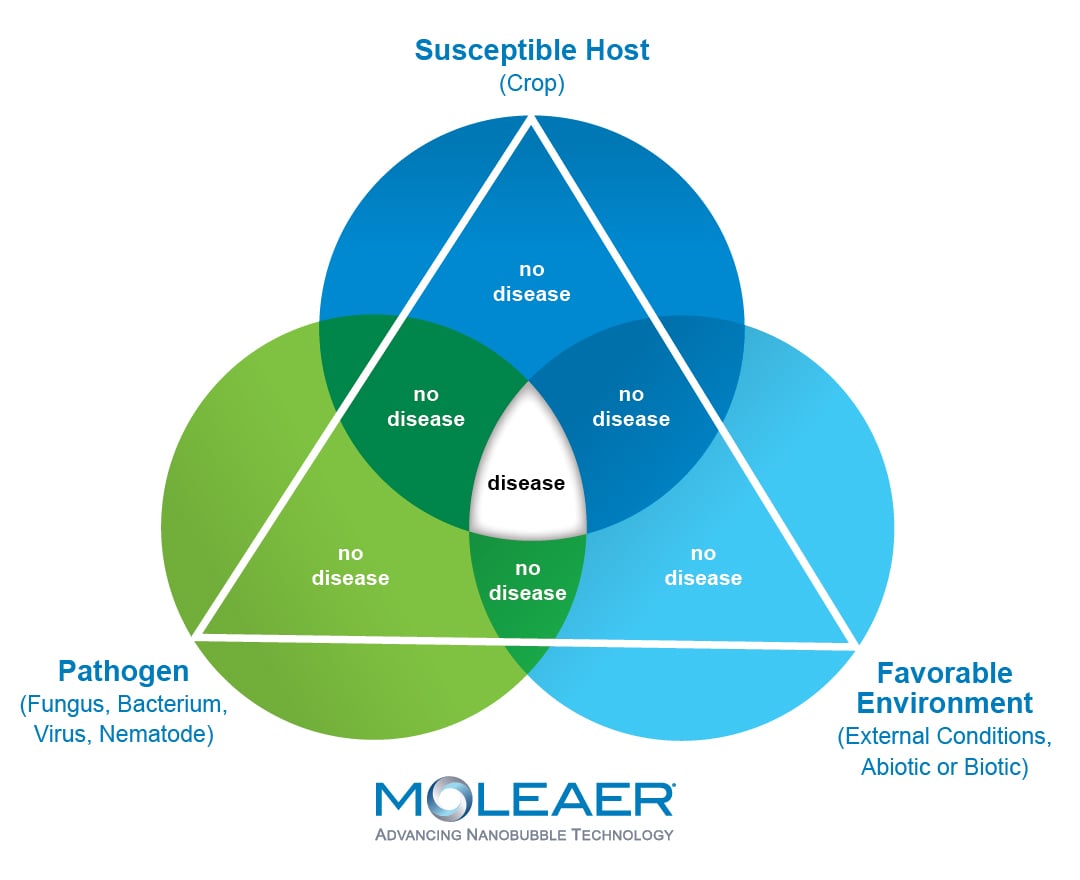How improving water quality with nanobubbles helps growers achieve healthier, more profitable crops
What is integrated pest management (IPM) in CEA and Horticulture?
Integrated Pest Management (IPM) is an “ecosystem-based strategy that focuses on long-term prevention of pests or their damage through a combination of techniques such as biological control, habitat manipulation, modification of cultural practices, and use of resistant varieties,” according to the University of California IPM Program.
Most growers, whether they are aware or not, use IPM regularly to prevent and control pests and diseases in their growing operations. From invasive weeds and insects to waterborne diseases, growers use a variety of tools, both preventative and reactive, to reduce the negative impacts on crop health and yield. IPM is key to reducing large onsets of any pest that could result in crop loss.
In CEA and horticulture, waterborne pathogens are especially critical to prevent since once in the irrigation system, they are extremely hard to control. Waterborne pathogens and fungi cause diseases such as Fusarium, Pythium and Phytophthora that greatly impact root health and crop yields.
Understanding and Using the Disease Triangle for Integrated Pest Management (IPM)
To understand diseases through the lens of IPM, the Disease Triangle is an important model. The Disease Triangle consists of the environment, pathogen and host plant.
- Host: The living plant species or variety that is susceptible to a particular disease and provides a habitat for the pathogen to grow and reproduce.
- Pathogen: A disease-causing microorganism, such as a fungus, bacterium, virus, or nematode, that invades and damages the host plant.
- Environment: The external conditions, including abiotic and biotic factors, that influence the interaction between the host and pathogen, affecting disease development and spread.
All of these must be present to elicit a disease to occur, however, if one is missing, the disease cannot take root. Since it’s often hard to remove the pathogen and impossible to remove the host plant or your crop, most IPM strategies focus on controlling the environment. Traditionally, controlling the environment for waterborne pathogens would come from prevention tactics like better water quality, reduced biofilm and cleaner growing medium.

How Nanobubbles Help with the Disease Triangle
Nanobubble technology has emerged to support all three points of the Disease Triangle, both directly and indirectly.
Moleaer’s nanobubble technology does two things: supersaturates irrigation water with dissolved oxygen and injects hundreds of millions of electrochemically charged nanobubbles that alter the properties of water to deliver multiple benefits.
Nanobubbles measure <200 nanometers in diameter, roughly 2500 times smaller than a grain of salt. At a typical concentration of hundreds of millions of nanobubbles per milliliter and possessing neutral buoyancy, they hover uniformly within a liquid, constantly providing strong, natural oxidative effects.
Environment – Better Water Quality
Water quality, the water environment, plays an important role in limiting root diseases. High-quality irrigation water must be well-oxygenated, but also properly disinfected to prevent disease encroachment.
Nanobubble technology efficiently increases dissolved oxygen (DO) levels in irrigation water, promoting an aerobic environment for beneficial bacteria. This environment is less conducive to waterborne pathogens, helping to prevent their proliferation.
Dissolved oxygen produced by nanobubble technology is more stable than other forms of oxygenation, enabling growers to achieve longer and more consistent dissolved oxygen concentrations in their irrigation water.
Because of the nanobubble’s hard surface, they also help to scour biofilm from irrigation system and line irrigation piping to reduce reformation. Biofilm is a pervasive coating found on most surfaces that are in frequent contact with water and harbors root cell pathogens.
Pathogen – Reduce Disease Pressure, Lower Pathogen Counts
Nanobubbles produce a mild oxidative effect when they come in contact with contaminants in the water, disrupting pathogen physiology and causing cell lysis. Through natural oxidation, nanobubbles directly reduce waterborne pathogens, allowing growers to achieve lower disease counts.
NovaCropControl, a research facility in the Netherlands, tested Moleaer’s nanobubble generators on greenhouse tomatoes and found that nanobubbles reduced pathogens by 75%. Another study at Delphy Research Institute saw similar reductions for greenhouse strawberry crops with 74% reduction in Pythium counts.
Moleaer Nanobubble Technology Benefits for Crops
- Revol Greens: 80% reduction in Pythium
- Bux-Mont Hydroponics: Root disease elimination
- Meewisse Roses: Notable reductions in Fusarium and Pythium levels
- Penninx Strawberries: Significant reductions in Phytophthora and Pythium species
- Prominent Grevelingen: 50% reduction in the use of hydrogen peroxide for cleaning and the elimination of the need to dose irrigation reservoirs with hydrogen peroxide
Host – Better Root Development, More Resilient Crops
Increased dissolved oxygen levels maximize oxygen utilization by plants and beneficial microbes in the rhizosphere, promoting healthy root development and improving plants’ resilience to environmental stressors such as drought and heat. Healthier, less stressed crops are less susceptible to pests and disease.
Nanobubble technology from Moleaer can be installed on any stored waterbody, including day and fertigation tanks, reservoirs or basins and drain tanks. Installation and integration is simple and growers see results soon after installation.
Due to the benefits in disease reduction, biofilm control, and crop improvements, growers using nanobubble-enriched irrigation water have seen increased and better quality crop yields, reduced crop cycles, lower fertilizer and chemical inputs and more.


